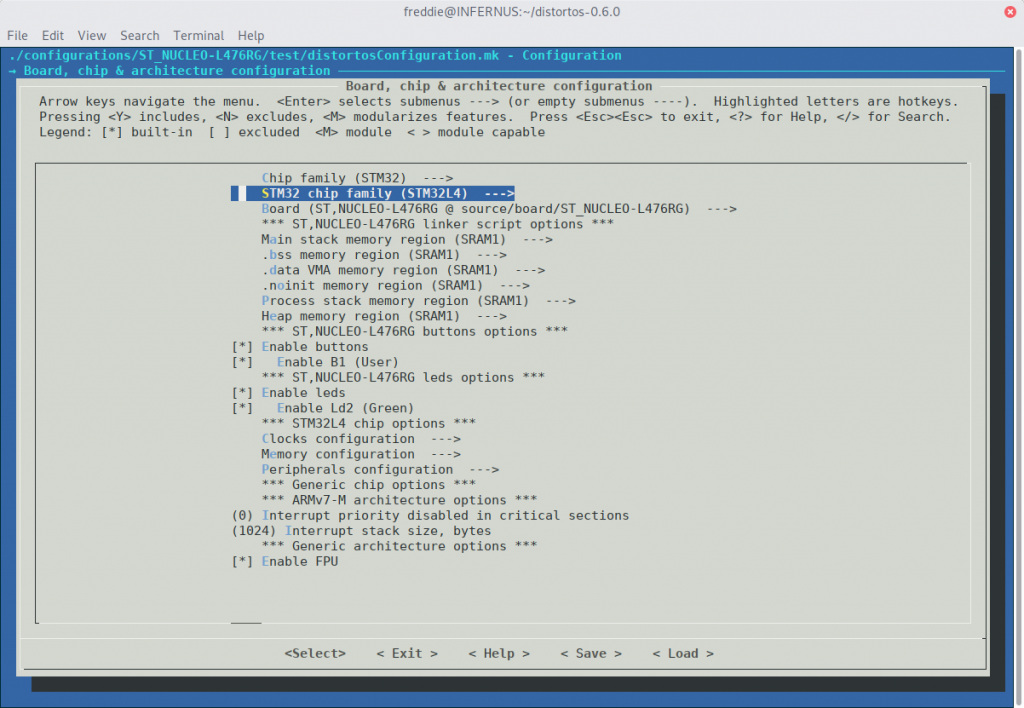Distortos is an open-source, object-oriented C++ real-time operating system (RTOS) designed specifically for microcontrollers. It is known for its simple and efficient design, strong configurability, and native support for C++, providing embedded system developers with a modern development experience. This article will detail the core features, architectural design, build process, and application prospects of Distortos.

1. Core Advantages of Distortos
The core advantage of Distortos lies in its object-oriented C++ design philosophy. This allows developers to utilize the powerful features of C++, such as classes, inheritance, and polymorphism, to build more modular, maintainable, and scalable embedded systems. Compared to traditional C-based RTOS, Distortos offers a higher level of abstraction and clearer code structure, thereby improving development efficiency and code quality.

2. Architectural Design and Key Features
The architectural design of Distortos emphasizes simplicity and efficiency. Its key features include:
-
• Object-Oriented C++: Distortos is fully developed in C++, leveraging the object-oriented characteristics of C++ to enhance code reusability and maintainability. -
• Modular Design: Distortos adopts a highly modular design, allowing developers to select and configure the necessary components based on specific application requirements, reducing resource consumption and improving system efficiency. -
• Configurability: Distortos provides a flexible configuration mechanism, enabling developers to customize system behavior according to hardware platforms and application needs, such as task scheduling policies and memory management strategies. -
• Real-Time Performance: As an RTOS, Distortos meets the strict timing requirements of real-time applications, ensuring that the system can respond promptly to external events. -
• Ease of Use: Distortos offers a simple and easy-to-use API, facilitating rapid onboarding and development for developers.
 3. Build and Configuration Process
3. Build and Configuration Process
Distortos uses the CMake build system, supporting various compilers and hardware platforms. The build process is relatively simple but requires some necessary tools and environment configurations:
-
1. Install Necessary Tools: You need to install CMake (version 3.8 or higher), Ninja build tool, and a cross-compilation toolchain for the target hardware platform (for example, the arm-none-eabi toolchain). -
2. Obtain Source Code: You can clone the Distortos code repository via Git or download the source code archive. -
3. Create Build Directory: Create a separate build directory outside the source directory. -
4. Configure Project with CMake: Use the CMake command in the build directory to configure the project, specifying the toolchain file and build generator (for example, Ninja). The toolchain file is used to select the target hardware platform and compiler. Distortos provides several pre-configured toolchain files and also allows developers to customize their own toolchain files. -
5. Compile Project: Use the selected build tool (for example, Ninja) to compile Distortos.
4. Board Support and Generation Tools
Distortos provides a powerful board support generation tool that uses Python scripts and YAML files to describe the characteristics of the target hardware platform and automatically generate the necessary code and configuration files. Developers can define new hardware platforms by modifying the YAML files, thus expanding the support range of Distortos. This greatly simplifies the integration process of new hardware platforms.
5. Testing and Application Prospects
Distortos provides a large number of unit tests to ensure its stability and reliability. Developers can use these tests to verify the operation of Distortos on different hardware platforms.
Distortos is suitable for various embedded system applications, such as:
-
• Real-Time Control Systems: For example, industrial automation, robotic control, etc. -
• Data Acquisition Systems: For example, sensor networks, environmental monitoring, etc. -
• Network Communication Systems: For example, IoT devices, embedded network devices, etc.
Distortos’s object-oriented C++ design, flexible configurability, and powerful board support generation tools make it an ideal choice for developing modern embedded systems. It provides developers with an efficient, reliable, and easy-to-use development platform that can meet the needs of various embedded applications.
6. Conclusion
With its unique advantages, Distortos is gradually becoming a rising star in the field of embedded system development. Its native support for C++, modular design, and flexible configuration mechanism offer unprecedented convenience and efficiency for developers. As its community continues to grow and its features are continuously improved, the future development prospects of Distortos are promising.
Project Address:https://github.com/DISTORTEC/distortos